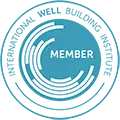USGBC’s press release dated July 26, 2012 proudly declares that “the total footprint of commercial projects certified under its LEED green building program surpassed two billion square feet.” No doubt that’s a lot of green, clean space, and so we can’t help but be in awe with this new milestone for LEED.
The stats keep changing, and mostly it’s for the better.

At one with nature: The Philip Merril Environmental Center in Maryland is one of the first buildings to earn LEED certification.
It’s as if, despite the numerous opponents LEED has had to fend off, the number of supporters of LEED has steadily grown, whether in tiny surges or triumphant leaps.
One moment the USGBC’s website tells us 1.6 million square feet of commercial space is being certified each day worldwide, the next the figure has jumped to 2 million. Currently, there are 159,000 registered and certified projects in LEED, for both commercial and residential spaces. But, of course, expect that number to climb, too, soon enough.
As we wait with bated breath for the new LEED v4, let’s take a look back at LEED milestones that have shaped this humble rating systems over the years as culled from the Web:
1993 Rick Fedrizzi, Mike Italiano, and David Gottfried start the U.S. Green Building Council (USGBC), which aims to promote sustainability through eco-friendly plans, designs, and operation of buildings.
1996 Engineers Tom Paladino and Lynn Barker co-chair LEED’s newly founded technical committee.
2000 LEED-NC v.1.0, LEED’s pilot version, is established. The Philip Merrill Environmental Center in Annapolis, Maryland gets Platinum rating.
2001
The US General Services Administration (GSA) becomes the first federal member of the U.S. Green Building Council. Eventually, GSA would require all federal offices to be LEED-certified, favoring this rating systems over other green building standards.
2005 LEED NCv2.2 is developed.
The Energy Policy Act of 2005 requires federal agencies to apply sustainable design principles to the siting, design, construction, and maintenance of all new buildings.
January 2007 President George W. Bush signs Executive Order 13423 aimed at “Strengthening Federal Environmental, Energy, and Transportation Management”.
The order requires federal agencies to achieve “goals in the areas of energy efficiency, acquisition, renewable energy, toxics reductions, recycling, renewable energy, sustainable buildings, electronics stewardship, fleets, and water conservation” in at least 15 percent of its existing building inventory.
2007 The Aldo Leopold Foundation Headquarters in Wisconsin becomes the first ever, fully LEED-platinum certified, carbon neutral building.
October 2007 LEED for Homes is launched, having piloted two years earlier.
2008 A worldwide economic crisis, hitting the U.S. especially hard, results in the bankruptcy of many financial institutions. The housing market is severely affected as well.
2009 LEED v3, also known as LEED 2009, is launched. The revised LEED consists of a new continuous development process, a new version of LEED Online, and an updated suite of nine rating systems.
March 2010 Five years after the pilot of LEED for Homes, the program surpasses the 5,000 milestone.
December 2010 USBGC maintains that LEED will recognize only those lumber products with FSC (Forest Stewardship Council) certification, disregarding other wood certification programs. Founded in 1993, the Forest Stewardship Council (FSC) is a non-profit organization which supervises the responsible use and management of forests for commercial purposes. It’s the check-mark-on-a-tree logo we see printed on wood products from sustainable forests.
April 2011 Tacoma Housing Authority’s Salishan 7 in Washington becomes the 10,000th home to get LEED certification.
July 2011 U.S. Congress opposes the plan to green build the Department of Defense.
September 2011 The Empire State Building becomes the tallest LEED-certified building in the U.S, earning a Gold rating.
November 2011 USGBC launches a new LEED Apps called the App Lab, which should make documentation more manageable for LEED users.
February 2012 Having failed yet again to be included in the LEED rating system, the Sustainable Forestry Initiative (SFI) retaliates by urging U.S. Congress to rethink and consequently junk LEED. Over the years, the USGBC has argued that SFI is not a third-party system of verification, and is instead confined to the lumber industry.
March 2012 The Anahuac National Wildlife Refuge facility in Texas becomes the 12,000th commercial building to get LEED certification, earning a Gold rating.
June 2012 Just a year after hitting the 10,000 mark, the number of residential buildings with LEED for Homes certification doubles.
Flooded with some over 20,000 comments so far, the USGBC delays ballot on LEED 2012 until June 1, 2013, to prepare and the general public for the changes that will take effect in the new LEED, and also to further fine-tune the ratings system. LEED 2012 is now dubbed LEED v4.
July 2012 Worldwide, the 2 billion-square-foot mark of LEED-certified commercial building spaces is reached.












